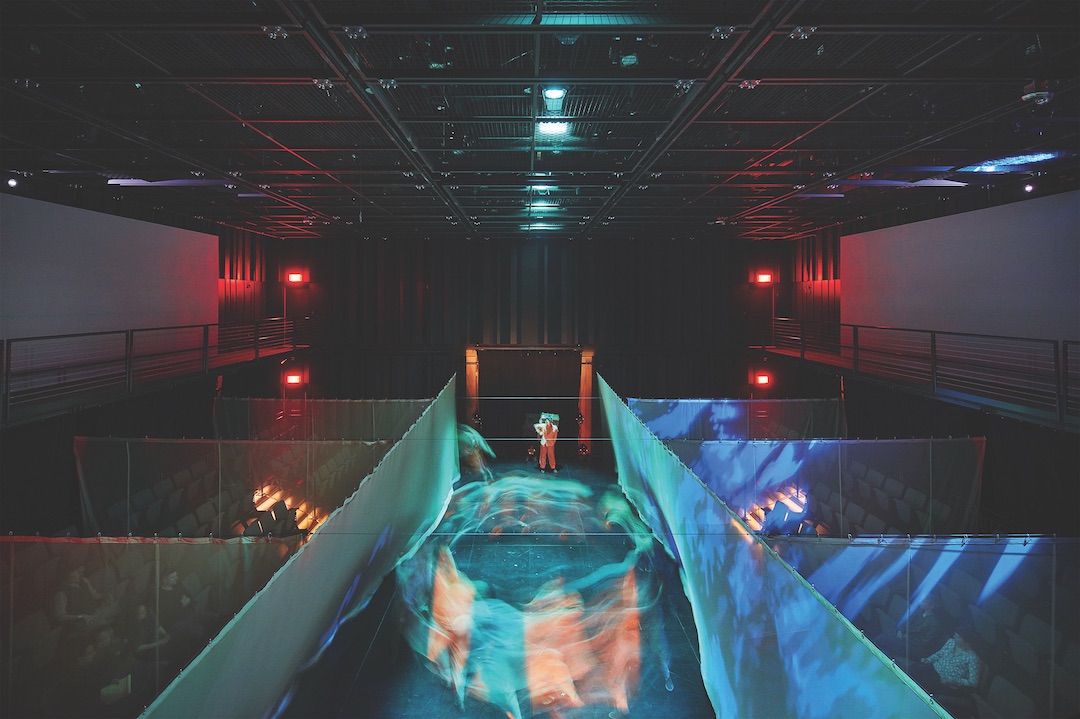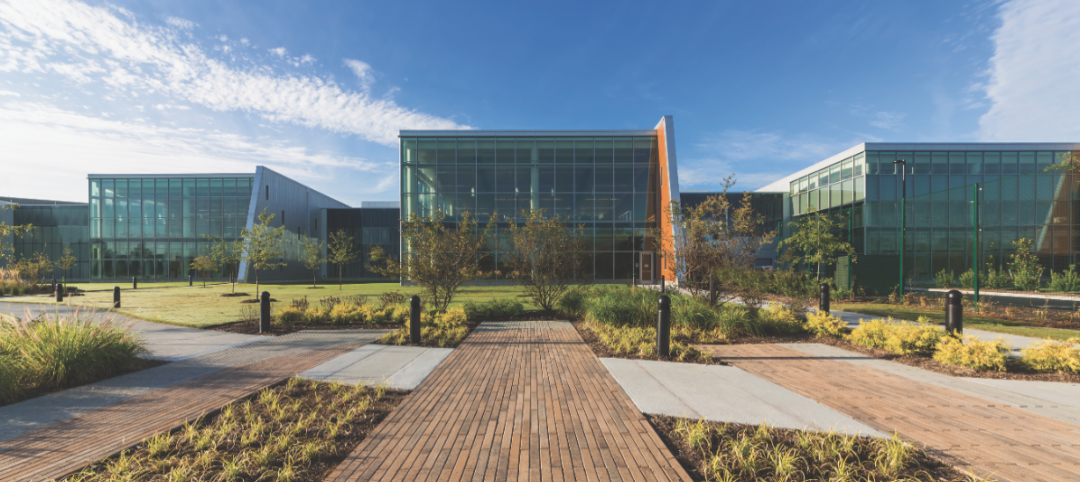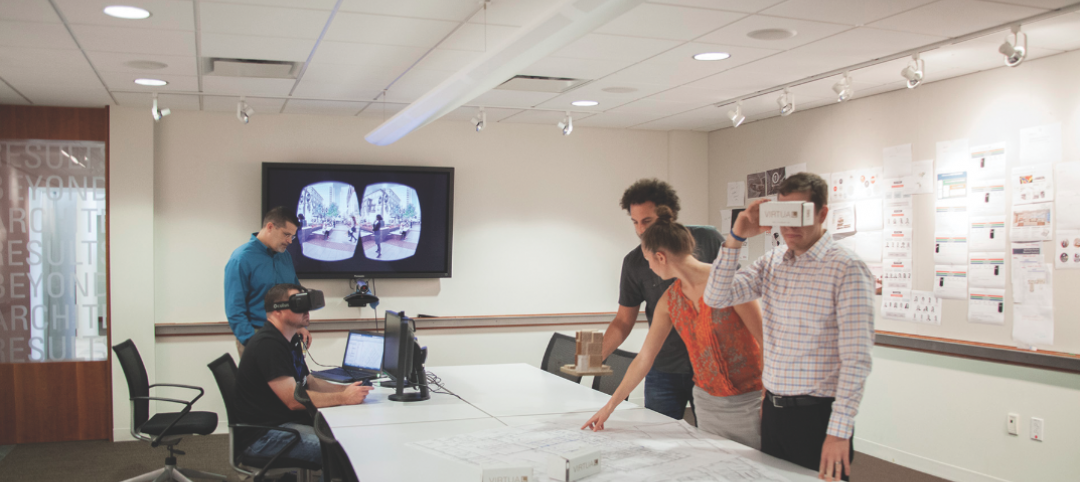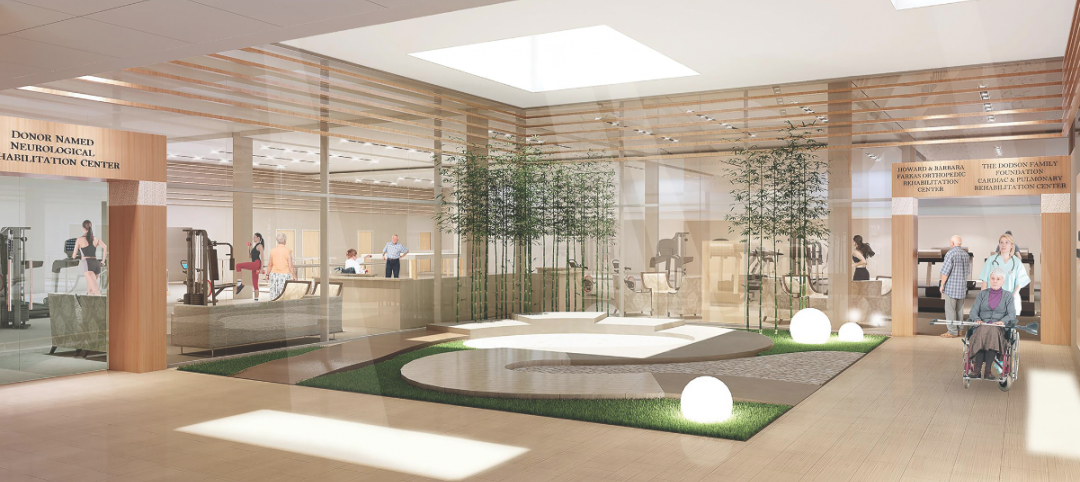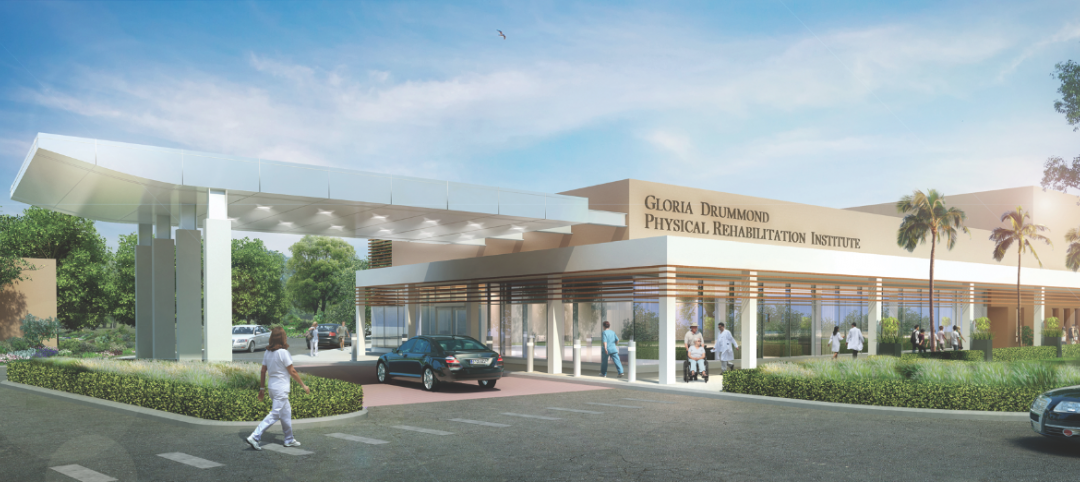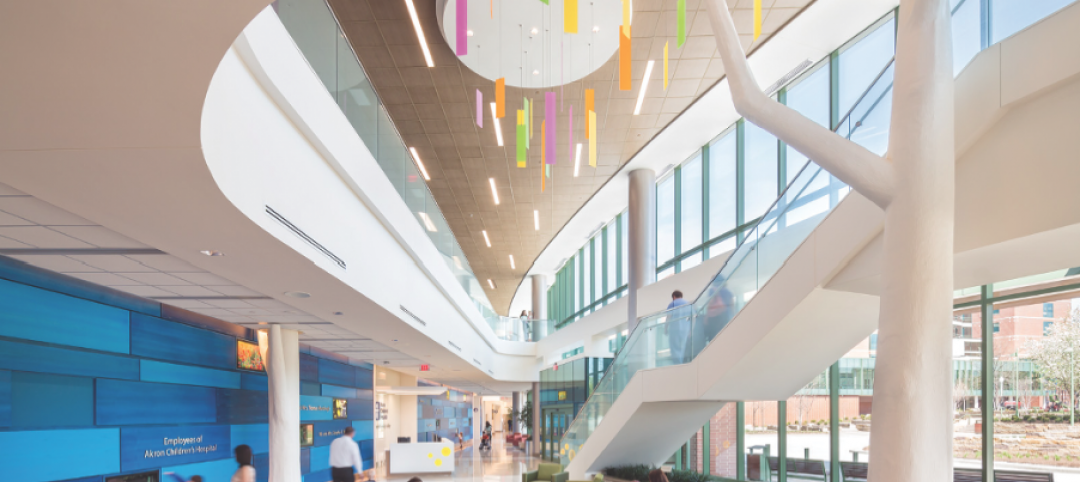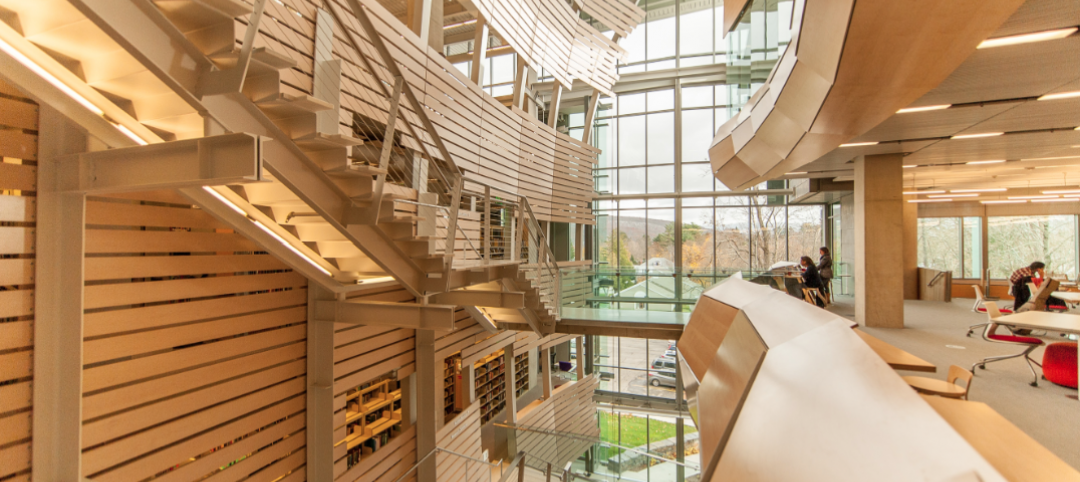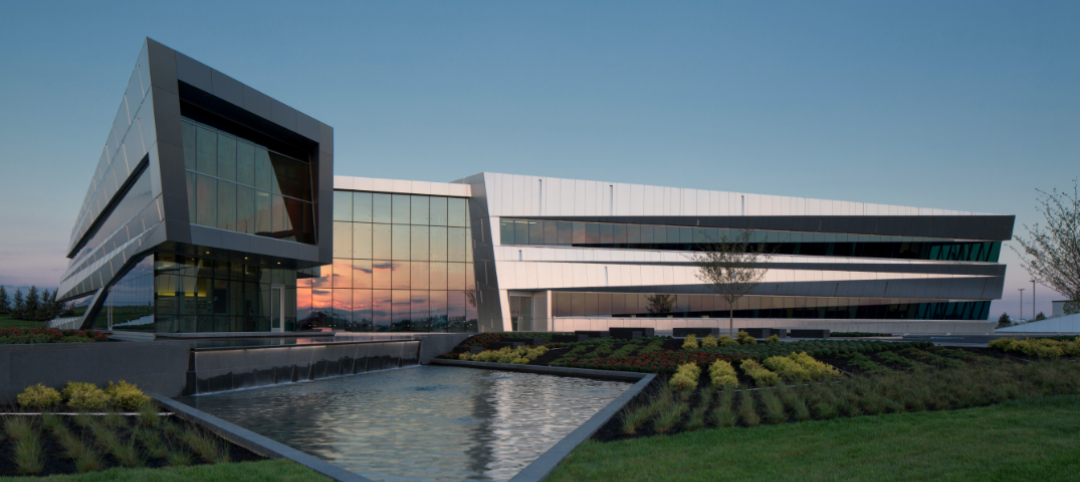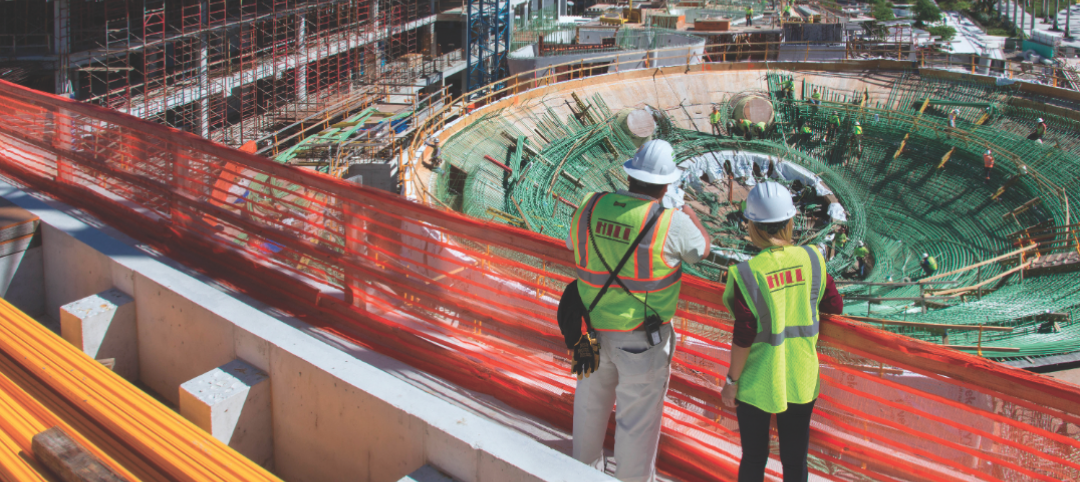“Bad libraries build collections, good libraries build services, great libraries build communities.”
That statement by R. David Lankes, a professor at Syracuse University’s School of Information Studies, was a bit controversial when he tweeted it back in February of 2012.
But now, in July of 2019, it seems as though many architects and designers agree; a library should go beyond being just a collection of books, and instead become all-inclusive community learning centers (with the key word here being “community”).
And what better way to highlight the community aspect than to incorporate it directly within (or, in some cases, above) the library itself.
Related content: Top 110 Cultural Sector Architecture Firms
Related content: Top 70 Cultural Sector Engineering Firms
Related content: Top 65 Cultural Sector Construction Firms
Both the Milwaukee Public Library and the Brooklyn Public Library have recently completed or are nearing completion on branches that, in addition to their collections of books, also include features such as maker spaces, recording studios, and apartment units.
The HGA-designed Mitchell Street Branch of the Milwaukee Public Library, created from the former Hills Department Store originally built in 1919, is a shining example of the library design direction many municipalities are champing at the bit to head in.
The library, which occupies 23,000 sf across the ground level, mezzanine, and lower level of the renovated building, isn’t interested in the stereotypical musty spaces filled with librarians who’s glasses are perched precariously on the tips of their noses. Instead of a maze of domineering stacks filled with suppressive shushers, the Mitchell Street library provides bright, open spaces capable of hosting events like, say, a Mexican-style professional wrestling show dubbed “Crush the Shush.”
In addition to quarreling luchadores, the Mitchell Street library also includes amenities such as a maker space with tech lockers, a graphics workstation, a 3D printer, and audio mixing equipment; a recording booth; and a kitchen for demonstrations on healthy cooking and eating.
‘Bad libraries build collections,
good libraries build services, great
libraries build communities.’
— R. David Lankes, Syracuse University School of Information Studies
A highly visible storefront display area connects people on the street to the activities occurring within and design details such as restored historic elements and roll-up doors painted by local youth artists combine to create a bright, transparent interior that forgoes the typical library aesthetic.
Other amenities include a 120-person community room, a young adult zone, an open children’s area, a staff workroom with automated material handling, an intergenerational living room with a fireplace, and a mezzanine reading balcony. And to top it all off, literally and figuratively, 60 market-rate apartments are located on the upper floors to create a brand new living and learning community under one roof.
Similarly, the Sunset Park Branch of the Brooklyn Public Library (slated for a December 2020 completion and designed by Magnusson Architecture and Planning) comprises eight stories and 21,000 sf. The library encompasses the first two and a half floors of the building, while the remaining five and a half floors house 50 affordable residences for qualified low-income occupants. Reading spaces, learning spaces, and a community room are also included in the design.
Libraries aren’t the only cultural buildings getting in the community spirit
But libraries aren’t the only cultural facilities branching out and trying to offer more than has been expected of them in the past. Spaces for performing arts on university campuses are beginning to adapt and embrace interdisciplinary pedagogy. Take Macalester College’s new Theater, Dance, and Classroom building, designed by HGA, for example. Located in St. Paul, Minn., the new building links to the adjacent Olin-Rice Science Center to provide both a physical and a symbolic connection between the arts and the sciences.
The building includes a flexible performance space that allows for different seating and performance configurations, a 2,400-sf dance studio, and a smaller theater that can serve as a black box studio. And while you will find everything you would expect in a performing arts building, the new space also includes nine flexible classrooms that serve as teaching areas for classes ranging from the humanities to science.
The goal for performing arts spaces such as the Theater, Dance, and Classroom building, is to break down the walls between what were once disciplines on opposite ends of the spectrum, allowing them to instead work together and create a completely new learning experience. Similar to the ideas guiding library design, creating well-rounded cultural building communities is of the utmost importance.
MORE FROM BD+C'S 2019 GIANTS 300 REPORT
Related Stories
Giants 400 | Aug 6, 2015
GREEN BUILDING GIANTS: Green building movement hits a new plateau, but the underlying problems remain
Today, the green building movement is all about eliminating toxic substances in building materials and systems and, for manufacturers, issuing environmental and health product declarations. Whether these efforts will lead to healthier products and building environments remains an open question.
Giants 400 | Aug 6, 2015
BIM GIANTS: Robotic reality capture, gaming systems, virtual reality—AEC Giants continue tech frenzy
Given their size, AEC Giants possess the resources and scale to research and test the bevy of software and hardware solutions on the market. Some have created internal innovation labs and fabrication shops to tinker with emerging technologies and create custom software tools. Others have formed R&D teams to test tech tools on the job site.
Giants 400 | Aug 6, 2015
GIANTS 300 REPORT: Top 75 Healthcare Construction Firms
Turner, McCarthy, and Skanska top Building Design+Construction's 2015 ranking of the largest healthcare contractors and construction management firms in the U.S.
Giants 400 | Aug 6, 2015
GIANTS 300 REPORT: Top 80 Healthcare Engineering Firms
AECOM, Jacobs, and Burns & McDonnell top Building Design+Construction's 2015 ranking of the largest healthcare engineering and engineering/architecture firms in the U.S.
Giants 400 | Aug 6, 2015
GIANTS 300 REPORT: Top 115 Healthcare Architecture Firms
HDR, Stantec, and Perkins+Will top Building Design+Construction's 2015 ranking of the largest healthcare architecture and architecture/engineering firms in the U.S.
Giants 400 | Aug 6, 2015
HEALTHCARE AEC GIANTS: Hospital and medical office construction facing a slow but steady recovery
Construction of hospitals and medical offices is expected to shake off its lethargy in 2015 and recover modestly over the next several years, according to BD+C's 2015 Giants 300 report.
Giants 400 | Aug 6, 2015
GIANTS 300 REPORT: Top 75 Construction Management Firms
Jacobs, AECOM, and Hill International head Building Design+Construction's 2015 ranking of the largest construction management and project management firms in the United States.
Giants 400 | Aug 6, 2015
GIANTS 300 REPORT: Top 100 Contractors
Turner Construction and Whiting-Turner Contracting top Building Design+Construction's 2015 ranking of the largest contractors in the United States.
Giants 400 | Aug 5, 2015
CONSTRUCTION GIANTS: Economists hedge their bets on prospects for nonresidential construction
Leading economists expect spending for nonresidential construction to rise in 2015 by somewhere in the 6.4–7.7% range, and remain strong in 2016, according to BD+C's 2015 Giants 300 report.
Giants 400 | Aug 5, 2015
GIANTS 300 REPORT: Top 85 Office Sector Construction Firms
Turner, Structure Tone, and Gilbane top BD+C's ranking of the nation's largest office sector contractors and construction management firms.


